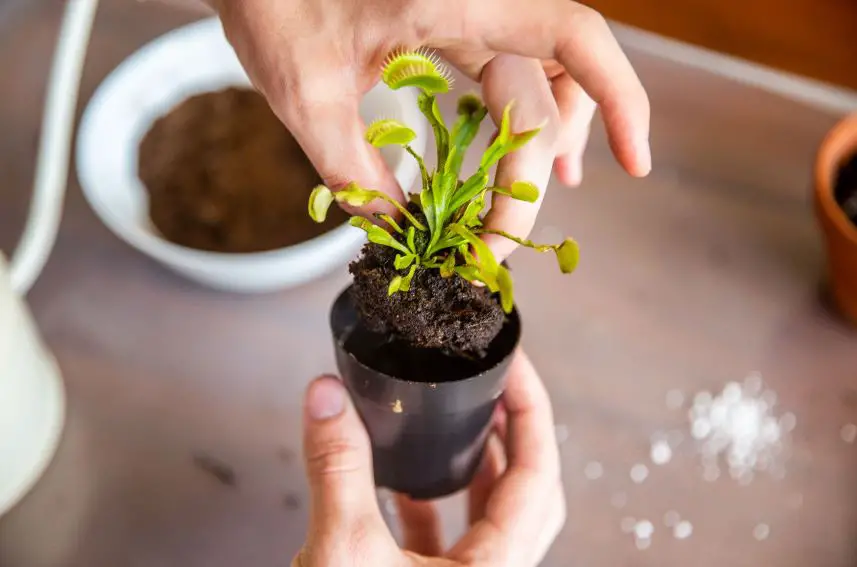While attractive, carnivorous plants like the Venus fly trap have extremely particular requirements. They need a certain kind of soil mixture, a lot of clean water, and a lot of humidity. A new pot is one item they do not need very often. Venus fly traps should only be planted every few years again if they thrive.

About the Venus Fly Trap
This unusual kind of plant is one of a few carnivorous plants that obtain a significant portion of its energy by capturing and eating creatures, mostly insects. In North and South Carolina’s marshy savannas, the Venus fly trap is a natural plant.
It thrives on sandy, somewhat acidic soil that is moist, sunny, and humid. The fly trap’s natural environment lacks nutrients. Because of the low soil quality and acidity, it is challenging for plants to absorb nutrients.
They capture and consume insects to make up for this nutrition deficiency. They do this by modifying leaves to create clamshell-shaped traps filled with delicious nectar that attract insects. The trap swings shut, releases digestive enzymes, and eats the insect when an insect meets the bristles on the margins of the leaves.
When is it necessary to repot a Venus fly trap?
A Venus fly trap is not particular about many things, including space. It never develops deep root systems since it grows in an area with inadequate soil. They do not need much depth or room for their little roots.
Keep the plant in its current location if it is healthy and growing well. If a Venus fly trap has been flourishing in its pot for two to three years and has grown noticeably, you may repot it.
Do not attempt to transplant a Venus fly trap unless essential. If you do not handle it properly, they may be fatally shocked and die. Apart from repotting for space every few years, only repot a plant if it is not flourishing. This could happen in a few circumstances:
- Without understanding, you fertilized it even though a Venus fly trap should never be fertilized.
- The plant is placed in typical potting soil.
- Some kind of bug has infected the roots.
Repotting a Venus Fly Trap
Repotting this plant requires extreme caution since it dislikes being moved. Be gentle and only do it when it is required. Early spring, when the plant is just emerging from its winter slumber, is the ideal time to repot it.
Prepare the new container first. Recreate the soil mixture if your plant is flourishing. Here are some excellent choices if you are unsure of what that mixture is:
- Sand and peat mixed 50:50
- Perlite and peat mixed 50:50
- Peat, perlite, and sand mixed 50:25:25
Since it supplies acidity, peat is crucial. Never plant a Venus fly trap in regular soil, potting soil, or compost.
Fill the fresh container with purified water, then stir to wet it evenly. Make a hole that is the same in size as the first container. Put the plant into the new hole after carefully removing it from its container. Never split or separate the roots. Avoid touching them as much as you can.
The Venus fly trap’s roots should be carefully washed in purified water before repotting if you transfer it because it was exposed to regular potting soil or fertilizer. While difficult, this is the only option to rescue the plant.

